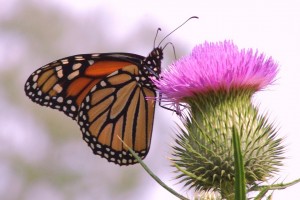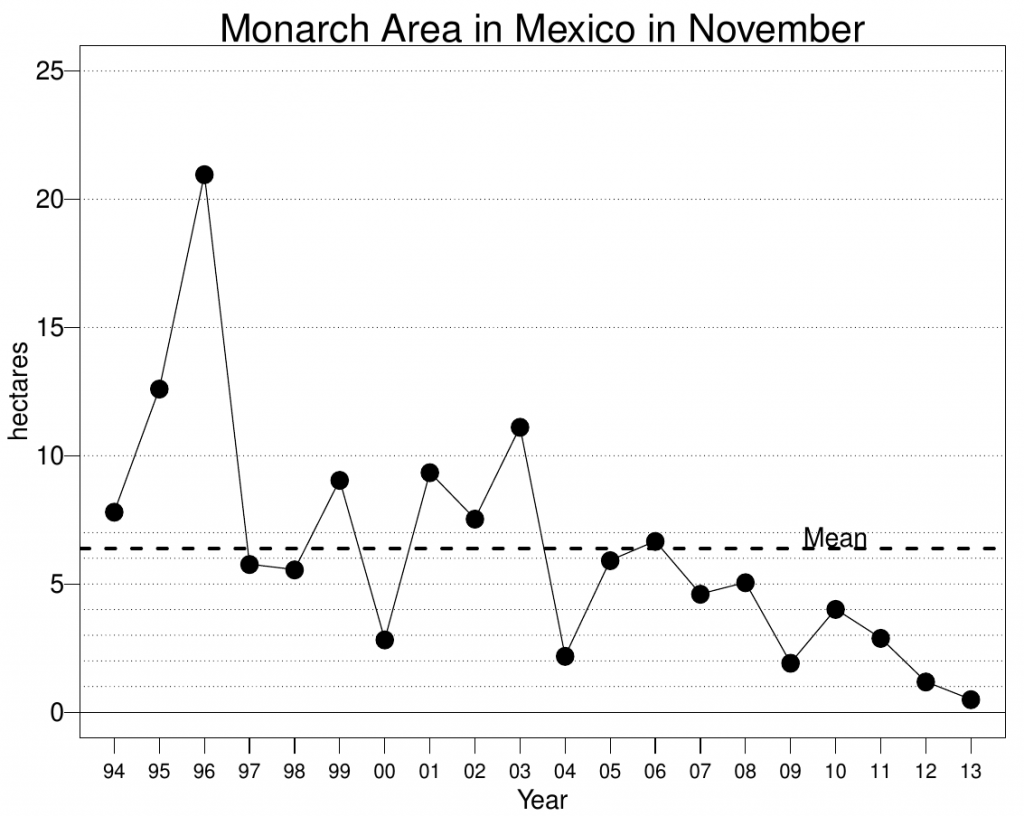As many of you know, the number of monarch butterflies has been falling in recent years. Each year in late summer and fall, the monarchs of North America east of the Rocky Mountains fly hundreds or thousands of miles to central Mexico’s Oyamel fir forest, where they spend the winter. For the last twenty years the area occupied by the monarchs in Mexico has been measured to give some indication of how many made it. As seen in the graph, this area has been dropping steadily for the last six years, and 2013 saw the area fall to its lowest level ever, only 0.5 hectares (1.2 acres, about 3x the size of the Prairie House and its parking lot), and far below the mean level of about 6.6 hectares (16.5 acres).
According to scientific studies, the main cause of this decline is loss of habitat, especially the milkweed plants where monarchs lay their eggs and which the monarch caterpillar larvae feed on exclusively. Changes in agriculture are thought to underlie the loss of milkweeds, including loss of traditional hedgerows of native vegetation around fields because the fields are planted and plowed right to the edge. Furthermore, the planting of genetically-modified corn and soybeans, which are “engineered” to be resistant to the herbicide Roundup, means that Roundup can be used to literally kill everything but the corn and soybeans. The number of milkweed has fallen dramatically, and the monarchs with them.
Someh ow monarch habitat (milkweed) has to be protected. Individually we can plant milkweeds in our gardens (see Douglas Tallamy’s Bringing Nature Home), and it grows wild in places like Wolf Road Prairie, but the fundamental problem is at the system level of what has become “standard” agricultural practice. That must change if the monarchs we all know and and love are to survive in North America.
ow monarch habitat (milkweed) has to be protected. Individually we can plant milkweeds in our gardens (see Douglas Tallamy’s Bringing Nature Home), and it grows wild in places like Wolf Road Prairie, but the fundamental problem is at the system level of what has become “standard” agricultural practice. That must change if the monarchs we all know and and love are to survive in North America.
–E.J. Neafsey
